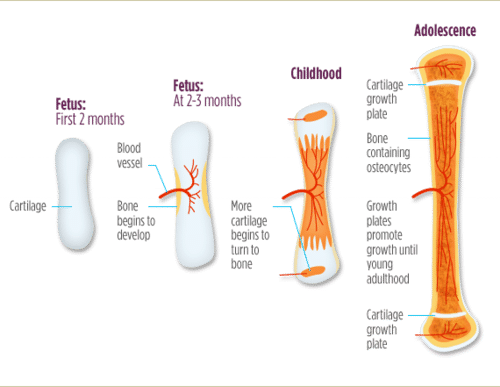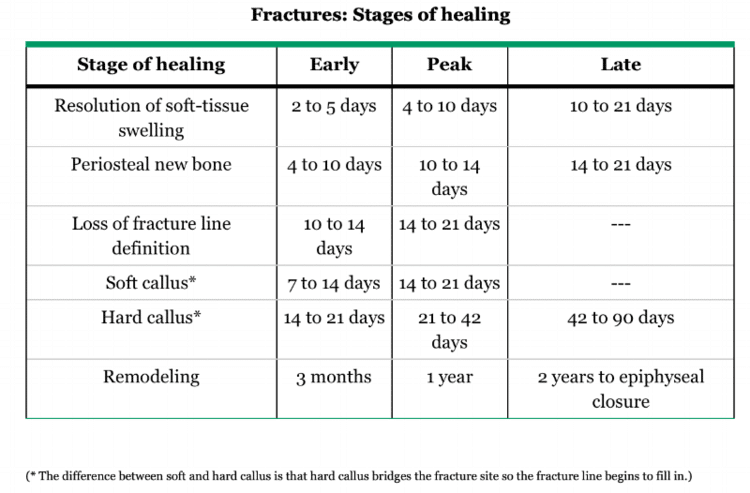When did the Child fractures happen? This is a question often asked by medical professionals in cases of alleged child abuse. Other important related questions are: Is it abuse? Who did it? When did this happen? In many of these cases, the only individuals who know what actually happened are the child and the adult supervising the child. Often the victim is too young to verbally communicate about the injury. In this case, medical professionals must review the medical records and diagnostic images to possibly determine when the fractures may have occurred.
In my current position as a Legal Nurse Consultant, understanding the cause and time of an injury is essential when evaluating a case. In this newsletter, I discussed types of fractures and how they might occur. In this post, we will look at ways to determine when a fracture happened.
When discussing fractures in children, it is important to understand bone growth at various ages (see Figure 1). Normal bone in the fetus is flexible and has a high degree of collagen, which is considered weak. The collagen bone then changes to what is known as lamellar bone during infancy and becomes stronger. Continued bone growth occurs during childhood to provide increased thickness and length.

Evaluating fractures in children to determine when the fracture may have occurred requires the expertise of medical professionals to examine the images and the medical records related to the incident and the physical exam. Unfortunately, this process cannot provide an exact timing of the injury and can only provide a range of possible dates of occurrence. The chart below (UpToDate 2018), notes a range of what may be seen in relation to radiologic changes in healing fractures in children.

This chart is not an absolute and would be considered a guideline for possible timing of healing fractures and what is seen on diagnostic imaging. Many other factors are related to the timing of fractures in children; therefore it is imperative these cases be evaluated by medical professionals to provide an appropriate possible timeline for the fracture occurrences. The presence or absence of soft tissue injury surrounding the fracture may also come into play when evaluating timelines and injury. Possible disease processes in the child may also play a factor in the timing of the radiologic evidence.
Evaluating child abuse cases is based on a multitude of factors and not solely related to a single instance; the whole picture requires evaluation. It is imperative attorneys obtain professional assistance in these cases; a Legal Nurse has the expertise and experience to evaluate medical records and related evidence to hone in on the likely timing and cause of the injury.
